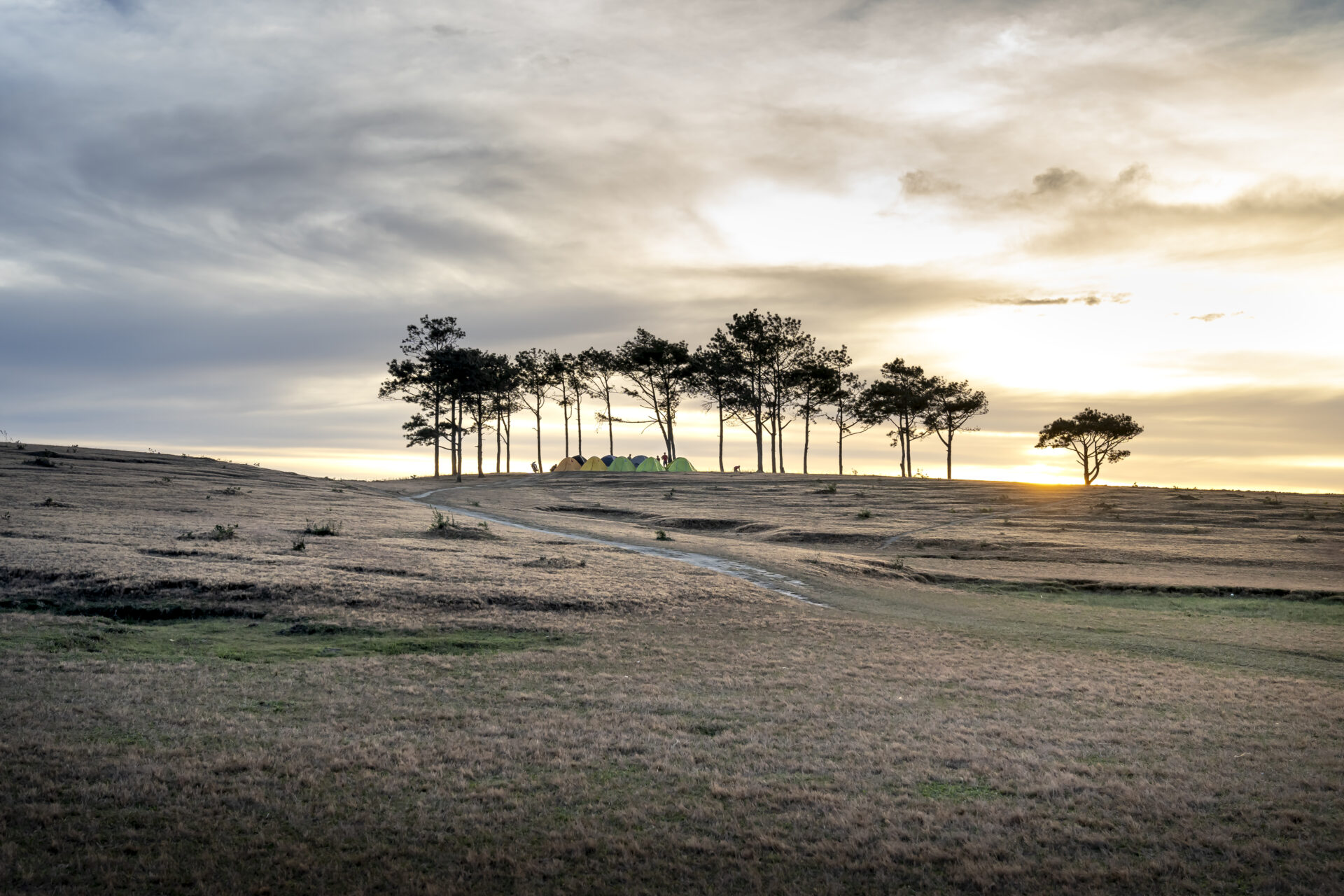South America is a continent of unparalleled natural beauty and breathtaking landscapes, making it a popular destination for camping enthusiasts. However, with the increasing awareness of environmental preservation, it is imperative to choose eco-friendly camping sites that have minimal impact on the environment. Fortunately, South America is home to a number of such camping sites that offer a unique and sustainable camping experience. In this article, we will explore the best eco-friendly camping sites in South America that not only provide a memorable camping experience but also promote responsible tourism and conservation efforts.
Introduction to Eco-Friendly Camping and Its Benefits
Camping is an excellent way to enjoy the beauty of nature while taking a break from the hustle and bustle of city life. However, traditional camping practices can have a negative impact on the environment. This is where eco-friendly camping comes in. Eco-friendly camping, also known as sustainable camping or green camping, is a responsible way of enjoying the outdoors while minimizing your impact on the environment.
Eco-friendly camping practices involve using sustainable camping gear, minimizing waste, and leaving no trace. This means that when you leave your campsite, it should look as if you were never there. In addition to reducing your environmental impact, eco-friendly camping also provides an opportunity to connect with nature, learn more about the local environment, and support local communities.
The benefits of eco-friendly camping are numerous. By reducing your environmental impact, you are helping to preserve the natural beauty of the area for future generations. Eco-friendly camping also helps to reduce pollution, conserve natural resources, and protect wildlife habitats. Additionally, eco-friendly camping provides an opportunity to support local communities by purchasing locally made products and supporting local businesses.
If you’re planning a camping trip to South America, there are numerous eco-friendly camping sites to choose from. These sites offer an opportunity to experience the beauty of the continent’s natural wonders while minimizing your impact on the environment. In the next section, we will explore some of the top eco-friendly camping sites in South America.
Top Eco-Friendly Camping Sites in South America
South America is home to some of the most breathtaking natural wonders in the world, and camping is an excellent way to experience them. Here are some of the top eco-friendly camping sites in South America:
1. Torres del Paine National Park, Chile
Located in the southern part of Chile, Torres del Paine National Park is one of the most beautiful places in South America. The park is home to stunning glaciers, turquoise lakes, and the iconic peaks of the Paine Massif. Camping in the park is an excellent way to experience the beauty of the area while minimizing your impact on the environment. The park has several eco-friendly camping sites that offer basic amenities such as toilets and showers.
2. Chapada Diamantina National Park, Brazil
Chapada Diamantina National Park is located in the state of Bahia in Brazil. The park is home to stunning waterfalls, caves, and canyons. Camping in the park is an excellent way to experience the beauty of the area while minimizing your impact on the environment. The park has several eco-friendly camping sites that offer basic amenities such as toilets and showers.
3. Los Glaciares National Park, Argentina
Located in the southern part of Argentina, Los Glaciares National Park is home to numerous glaciers, including the famous Perito Moreno Glacier. Camping in the park is an excellent way to experience the beauty of the area while minimizing your impact on the environment. The park has several eco-friendly camping sites that offer basic amenities such as toilets and showers.
4. Colca Canyon, Peru
Colca Canyon is located in southern Peru and is one of the deepest canyons in the world. The area is home to stunning landscapes, traditional villages, and an abundance of wildlife. Camping in the area is an excellent way to experience the beauty of the area while minimizing your impact on the environment. There are several eco-friendly camping sites in the area that offer basic amenities such as toilets and showers.
5. Tierra del Fuego National Park, Argentina
Located at the southern tip of Argentina, Tierra del Fuego National Park is home to stunning landscapes, including snow-capped mountains, forests, and lakes. Camping in the park is an excellent way to experience the beauty of the area while minimizing your impact on the environment. The park has several eco-friendly camping sites that offer basic amenities such as toilets and showers.
These are just a few of the top eco-friendly camping sites in South America. By camping responsibly and supporting eco-friendly camping sites, you can help to preserve the natural beauty of the area for future generations.
The Importance of Sustainable Tourism in South America
Tourism is an important industry in South America, and it has the potential to contribute significantly to the region’s economic growth. However, it is also important to ensure that tourism is sustainable and does not have a negative impact on the environment, local communities, or cultural heritage.
Sustainable tourism is a type of tourism that takes into account the environmental, social, and economic impacts of tourism. It aims to minimize negative impacts and maximize positive impacts on the environment and local communities. Sustainable tourism also involves promoting local culture and supporting local businesses.
In South America, sustainable tourism is particularly important because the region is home to numerous natural wonders, such as the Amazon Rainforest, the Andes Mountains, and the Galapagos Islands. These areas are fragile ecosystems that are vulnerable to the negative impacts of tourism, such as pollution, deforestation, and overfishing.
By promoting sustainable tourism practices, such as eco-friendly camping, responsible wildlife watching, and supporting local businesses, we can help to protect these natural wonders for future generations. Sustainable tourism also has the potential to contribute to the economic growth of local communities, while promoting cultural exchange and understanding.
In addition to supporting sustainable tourism practices, it is also important for travelers to be aware of their environmental impact while traveling. In the next section, we will explore some tips for reducing your environmental impact while camping in South America.
How to Plan an Eco-Friendly Camping Trip in South America
Planning an eco-friendly camping trip in South America requires some extra thought and preparation, but it is well worth the effort. Here are some tips for planning an eco-friendly camping trip in South America:
1. Choose an eco-friendly camping site
When planning your camping trip, choose an eco-friendly camping site that is committed to sustainable tourism practices. Look for campsites that have eco-friendly facilities, such as composting toilets and solar-powered showers. Research the campsite’s environmental policies and make sure they align with your values.
2. Use eco-friendly camping gear
Choose gear that is made from sustainable materials, such as bamboo or recycled plastic. Avoid single-use items, such as disposable plates and cutlery, and instead opt for reusable items. Bring a reusable water bottle and water filter to reduce your plastic waste.
3. Pack out your trash
Make sure to pack out all of your trash, including food waste. Do not leave any trash behind, as it can harm wildlife and pollute the environment. Bring a trash bag with you and dispose of your trash properly when you leave the campsite.
4. Respect wildlife and natural habitats
When camping in natural areas, it is important to respect wildlife and their natural habitats. Do not disturb wildlife or damage their habitats. Follow all park regulations and stay on designated trails to minimize your impact on the environment.
5. Support local communities
When camping in South America, support local communities by purchasing locally made products and supporting local businesses. This helps to promote sustainable tourism and supports the local economy.
By following these tips, you can plan an eco-friendly camping trip in South America that minimizes your impact on the environment and supports sustainable tourism practices.
Tips for Reducing Your Environmental Impact While Camping
Camping is a great way to connect with nature, but it’s important to minimize your impact on the environment while doing so. Here are some tips for reducing your environmental impact while camping in South America:
1. Use eco-friendly products
Choose camping gear that is made from eco-friendly materials, such as bamboo or recycled plastic. Use biodegradable soap and avoid using harsh chemicals that can harm the environment.
2. Minimize waste
Pack food in reusable containers and bring reusable cutlery and plates. Avoid single-use items, such as plastic water bottles and straws. Pack out all trash, including food waste, and dispose of it properly.
3. Respect wildlife and natural habitats
Respect wildlife and their natural habitats by staying on designated trails and not disturbing wildlife. Do not feed wildlife or leave food out, as it can harm animals and alter their natural behavior.
4. Conserve water
Water is a precious resource, especially in areas where water is scarce. Conserve water by taking short showers and turning off the water when brushing your teeth or washing dishes.
5. Use renewable energy sources
Use renewable energy sources, such as solar-powered lanterns and chargers, to reduce your carbon footprint. Avoid using generators, as they can be noisy and polluting.
By following these tips, you can reduce your environmental impact while camping in South America and help to preserve the region’s natural beauty for future generations.
The Role of Local Communities in Promoting Eco-Tourism in South America
Local communities play an essential role in promoting eco-tourism in South America. They are the guardians of the natural wonders that attract tourists to the region, and their participation is crucial in preserving these areas for future generations.
One way local communities promote eco-tourism is by offering tours and activities that showcase their culture and traditions. By sharing their knowledge and heritage, they can create a unique and authentic experience for visitors while promoting cultural exchange and understanding.
Local communities can also promote sustainable tourism practices, such as eco-friendly camping and responsible wildlife watching. By educating visitors about the importance of conservation and responsible tourism, they can help to minimize negative impacts on the environment and promote sustainable tourism practices.
Furthermore, local communities can benefit economically from eco-tourism. By supporting local businesses and purchasing locally made products, visitors can contribute to the local economy and support sustainable development in the region.
In South America, there are many examples of local communities that have successfully promoted eco-tourism. For example, the Kogui people in Colombia have created eco-lodges that offer visitors an authentic cultural experience while promoting sustainable tourism practices. Similarly, the Huaorani people in Ecuador offer eco-tours that showcase their traditional way of life while promoting conservation and sustainable tourism.
By supporting local communities that promote sustainable tourism practices, visitors can help to preserve the natural beauty of South America while supporting the local economy and promoting cultural exchange.
The Impact of Climate Change on South America’s Natural Wonders
Climate change is one of the most significant threats to our planet’s natural wonders, and South America is no exception. The region’s diverse ecosystems, from the Amazon rainforest to the Andes Mountains, are facing unprecedented challenges due to rising temperatures, changing precipitation patterns, and more frequent extreme weather events.
The consequences of climate change on South America’s natural wonders are far-reaching. The melting of glaciers in the Andes Mountains, for example, is affecting water availability for millions of people living in the region’s cities and towns. The Amazon rainforest, which is home to an estimated 10% of the world’s biodiversity, is under threat due to deforestation and increased wildfires caused by drier conditions.
The loss of biodiversity is another significant impact of climate change on South America’s natural wonders. As temperatures rise, many animal and plant species are struggling to adapt to the changing conditions. This can lead to a decline in their populations and, in some cases, extinction.
It’s important to note that the impacts of climate change on South America’s natural wonders are not limited to the region itself. Many of these ecosystems, such as the Amazon rainforest, play a crucial role in regulating the Earth’s climate. As they degrade, they release carbon dioxide into the atmosphere, contributing to further climate change.
As travelers, we have a responsibility to minimize our impact on the environment and support efforts to mitigate climate change. Choosing eco-friendly camping sites that prioritize sustainability and conservation is an excellent way to support these efforts. By reducing our carbon footprint and supporting conservation initiatives, we can help protect South America’s natural wonders for generations to come.
The Future of Eco-Tourism in South America
As awareness of environmental issues continues to grow, so does the demand for sustainable tourism options. Eco-tourism, in particular, has become increasingly popular in recent years, as travelers seek to minimize their impact on the environment while enjoying unique and authentic travel experiences.
South America is well-positioned to capitalize on this trend, with its stunning natural beauty and diverse range of ecosystems. In fact, many of the region’s top eco-friendly camping sites have seen a significant increase in bookings in recent years, as more travelers seek out sustainable tourism options.
The future of eco-tourism in South America looks bright, with many new initiatives and projects underway to promote sustainable tourism practices. These include everything from community-led conservation projects to government-led initiatives aimed at promoting eco-tourism in the region.
One of the most exciting developments in this area is the growth of community-led tourism initiatives. These projects involve local communities taking an active role in promoting sustainable tourism in their area, often by offering unique cultural experiences that allow travelers to connect with the local community.
Another important trend is the growing emphasis on conservation and environmental protection. Many eco-friendly camping sites in South America are actively involved in conservation efforts, working to protect the region’s natural wonders and promote sustainable resource use.
As eco-tourism continues to grow in popularity, it’s likely that we’ll see more and more innovative and sustainable tourism options emerge in South America. From eco-friendly lodges to community-based tourism projects, there are plenty of exciting opportunities for travelers looking to explore the region while minimizing their impact on the environment.
By supporting eco-friendly camping sites and other sustainable tourism initiatives in South America, we can help ensure that these unique ecosystems and cultural treasures are preserved for future generations to enjoy.
The Benefits of Supporting Eco-Friendly Camping Sites in South America
Choosing to stay at eco-friendly camping sites in South America can have a range of benefits, both for the environment and for local communities. Here are just a few of the reasons why supporting sustainable tourism options is so important:
Preserving South America’s Natural Wonders
By staying at eco-friendly camping sites, you can help support conservation efforts aimed at protecting the region’s unique ecosystems and natural wonders. Many of these sites are actively involved in conservation initiatives, working to promote sustainable resource use and minimize the impact of tourism on the environment.
Supporting Local Communities
Eco-friendly camping sites in South America often provide employment opportunities and other economic benefits to local communities. By choosing to stay at these sites, you can help support sustainable development in the region and contribute to the well-being of local people.
Minimizing Your Environmental Impact
One of the most significant benefits of eco-friendly camping is that it allows you to minimize your impact on the environment. By choosing to stay at sites that prioritize sustainability and conservation, you can reduce your carbon footprint and help protect the region’s natural wonders for future generations.
Enjoying Unique Travel Experiences
Eco-friendly camping sites in South America offer a unique and authentic travel experience that allows you to connect with the region’s natural beauty and cultural heritage. From exploring the Amazon rainforest to trekking through the Andes Mountains, there are plenty of exciting opportunities to discover the region’s many wonders.
By supporting eco-friendly camping sites in South America, you can help promote sustainable tourism practices and contribute to the conservation of the region’s unique ecosystems and cultural treasures. Whether you’re a seasoned eco-traveler or simply looking to minimize your impact on the environment, eco-friendly camping is an excellent way to explore the region while supporting sustainable development and conservation efforts.





Leave a reply